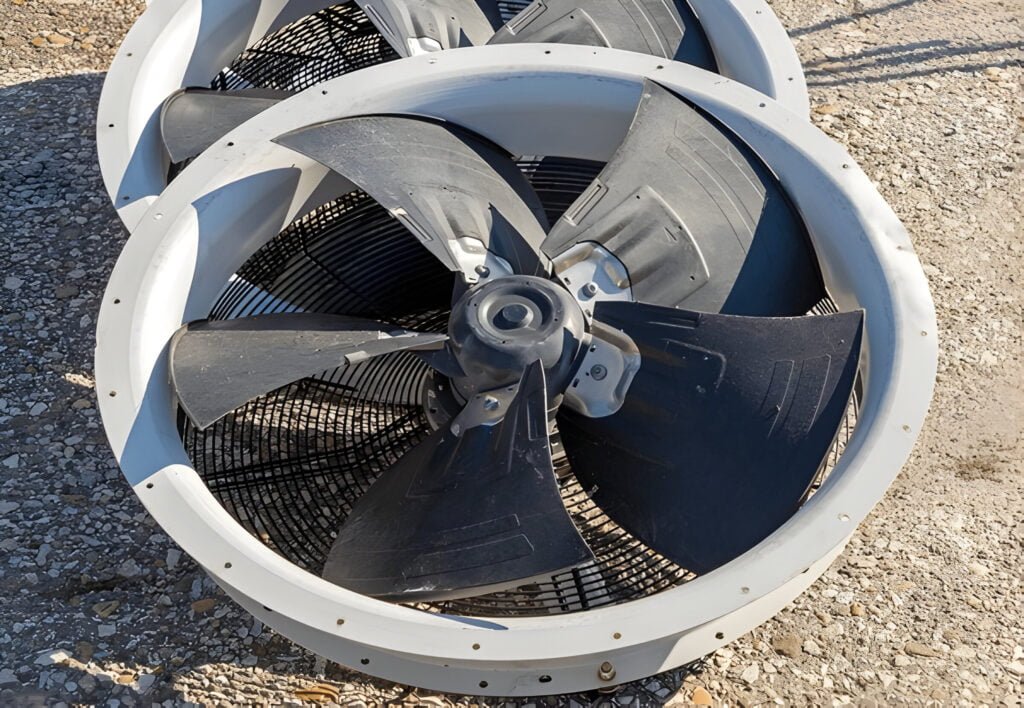Axial Fans Vs EC Fans: What Is the Differences
Axial fans and EC fans differ in design and efficiency. EC fans offer better performance, energy savings, and control.
Read More
Selecting the right axial fan involves considering several key factors: airflow requirements, static pressure needs, fan size and type, noise levels, energy efficiency, durability, and speed control features. By evaluating these aspects, you can choose an axial fan that meets your specific needs and ensures optimal performance for your system.

Calculating airflow requirements is the first step in selecting an axial fan. Determine the volume of air to be moved within a specific timeframe, measured in cubic feet per minute (CFM) or cubic meters per hour (m³/h). Add a 10-20% safety margin to accommodate future increases in heat load or system changes.
Static pressure measures the resistance a fan must overcome to move air through a system. It’s quantified in inches of water gauge (in. wg) or pascals (Pa). Higher static pressure requires more fan effort to push air through ducts, filters, and obstacles.
When selecting an axial fan, calculate the total pressure drop in your system, including losses from ductwork, dampers, and other components. Choose a fan that delivers the required airflow at this pressure.
Larger fans move more air at lower speeds, offering quieter operation and improved efficiency. However, they require more space, necessitating a balance between performance and size constraints.
Axial fan types include:


Manufacturer noise ratings in decibels (dB) indicate fan quietness. Lower dB values signify quieter operation. Larger fans typically produce less noise at the same airflow rate compared to smaller ones. Fan speed affects noise levels, with higher speeds increasing noise output.
Axial fan energy efficiency impacts long-term operating costs and environmental footprint. Select fans with high efficiency ratings to minimize power consumption while meeting airflow requirements. Evaluate specific power consumption in watts per cubic foot per minute (W/CFM). Lower values indicate better efficiency.
Axial fan durability depends on operating environment and expected lifespan. Assess temperature, humidity, and exposure to corrosives or particulates. Harsh environments require corrosion-resistant materials like stainless steel or plastic composites.
Fan housing and impeller materials affect durability.
Bearings influence fan longevity.
IP rating indicates fan protection against dust and moisture. Higher IP ratings ensure better environmental protection.
Axial fans often include speed control options for airflow adjustment and performance optimization. Speed control maintains ideal temperatures, reduces energy consumption, and minimizes noise levels. Common speed regulation methods include voltage control, pulse width modulation (PWM), and variable frequency drives (VFDs).
Voltage control, a cost-effective option for AC fans, alters fan speed by adjusting input voltage. This method may reduce torque at lower speeds.
PWM, typically used for DC fans, provides precise speed control by rapidly switching power on and off, maintaining torque across the speed range and offering energy efficiency.
VFDs offer advanced control for larger industrial applications. They adjust power supply frequency, allowing smooth speed transitions and high efficiency. When selecting a fan, consider specific speed regulation needs. Some applications require constant airflow regardless of environmental changes, while others benefit from automated speed adjustments based on temperature or pressure sensors.
Axial fans can be installed horizontally. This orientation requires consideration of airflow direction, mounting methods, and potential condensation issues.
Axial fans require servicing every 6-12 months, based on usage and environment.
Axial fans can operate in high-temperature environments when specifically designed for such conditions. These models incorporate heat-resistant materials and specialized bearings.
Axial fans can operate in reverse to exhaust air.